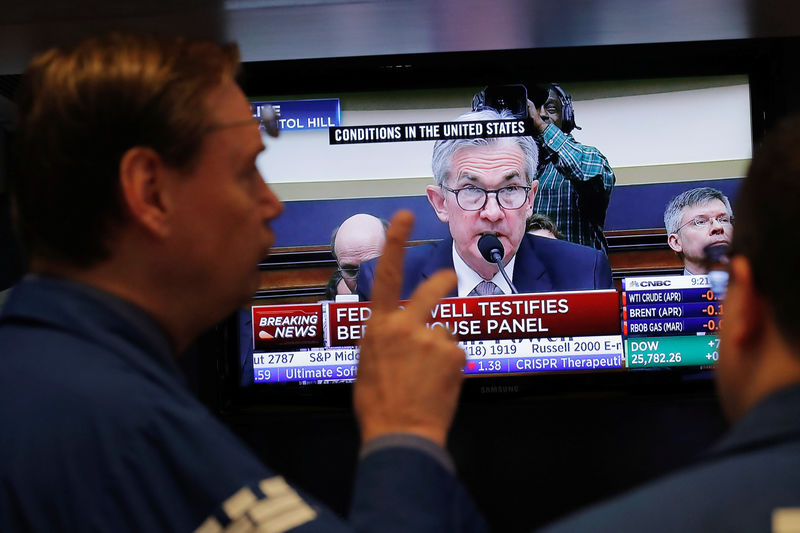Select Language

Investing.com -- The future trajectory of U.S. interest rates could become clearer this week when Federal Reserve Chair Jerome Powell speaks at the central bank’s annual Jackson Hole retreat. Before then, the Democratic National Convention gets underway, global PMI data will shed light on economic strength and energy markets will likely remain volatile amid elevated geopolitical tensions. Here's your look at what's happening in markets for the week ahead.
1. Jackson Hole
Fed Chair Jay Powell is due to deliver the keynote address at the central bank’s annual economic symposium in Jackson Hole, Wyoming on Friday at 10:00am ET (14:00GMT).
Markets will be laser focused on what he signals about the pace and timing of rate cuts over the coming months.
Hopes for an economic soft landing are once again propelling U.S. stocks higher, as recent positive data relieved worries over the prospect of a recession after a growth scare triggered a brutal selloff earlier this month.
Most market participants believe the Fed will cut rates at its upcoming September meeting, with the main debate being over the size of the cut - a quarter percentage point or a half point.
2. U.S. data
The Fed is to publish what will be closely watched minutes of its July meeting on Wednesday. The Fed left the door open to a September rate cut last month with Powell acknowledging progress on inflation.
Also Wednesday, the Bureau of Labor Statistics is slated to publish a preliminary estimate of the benchmark revision to the level of nonfarm payrolls for March 2024.
On Thursday the weekly report on initial jobless claims will be released.
Several Fed officials are also due to make appearances during the week including Fed Governor Christopher Waller, Atlanta Fed President Raphael Bostic and Fed Vice Chair for Supervision Michael Barr.
3. Democratic Convention
The U.S. presidential race is set to heat up as Democrats aim to boost Vice President Kamala Harris' candidacy during the party's convention in Chicago, starting Monday. Over the four-day event, prominent Democratic figures are scheduled to deliver speeches aimed at consolidating support for Harris.
Harris, who entered the race following President Joe Biden's decision to step down, has energized the Democratic base and narrowed the gap with Republican candidate Donald Trump in some opinion polls. She has even surpassed Trump in several betting markets ahead of the November 5 election.
As the race tightens, investors are keen to gain clarity on Harris' policy positions. Notably, Harris has underscored her commitment to preserving Federal Reserve independence, a stance that sharply contrasts with the views of her Republican rival, former President Trump.
4. PMI data
Purchasing managers' indexes deliver a real-time snapshot of economic activity and - with most of them out on Thursday - will provide an important insight into the outlook for global growth.
July's PMIs suggested an economic slowdown combined with persistent inflation, showing why central banks are in a dilemma.
U.S. manufacturing activity weakened, and German numbers were surprisingly dour, indicating that the Eurozone’s largest economy is contracting. But manufacturers' input prices in advanced economies hit an 18-month high.
Inflation will dictate the pace and depth of future rate cuts. A repeat of July's dour PMI data might mean monetary easing happens more slowly than markets would like.
5. Energy markets
Global energy markets have been experiencing volatility amid a mix of risk factors, with no immediate relief in sight. Recent concerns about escalating conflict in the Middle East have driven international crude oil prices above $80 a barrel, reflecting fears over potential supply disruptions from the region.
Simultaneously, uncertainties regarding oil demand, particularly from China, are capping further gains in crude prices.
European wholesale gas prices have also shown significant fluctuations, exacerbated by the potential disruption of Russian gas supplies through Ukraine. The ongoing conflict near the Russian town of Sudzha, a key transit point for gas flowing into Ukraine, has raised concerns about a possible halt in gas deliveries before the expiration of a five-year agreement with Gazprom.
--Reuters contributed to this report

